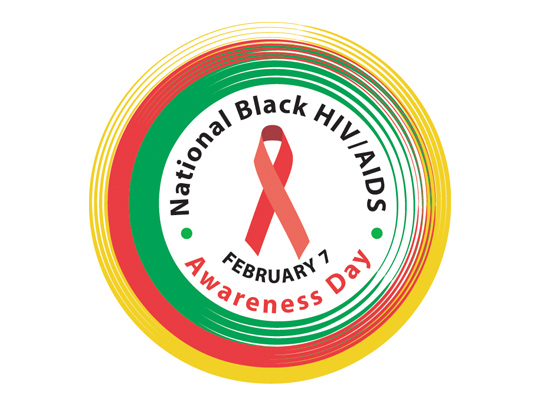Ryan White and National Black HIV/AIDS Awareness Day
Topics

Cross-posted from the TARGET CenterExit Disclaimer
January 29, 2018
Remarkable Improvements in Viral Suppression
Individuals who get their HIV/AIDS care from the Ryan White HIV/AIDS Program (RWHAP) have low incomes, little to no health coverage, but relatively high rates of viral suppression and retention in care. The same holds for black/African American individuals getting RWHAP care. Viral suppression rates in particular have seen dramatic improvements, with black/African American rates jumping from 63.3% in 2010 to 81.3% in 2016. However, these rates are consistently lower than those seen among other race/ethnicity groups. (See chart below.)
The Ryan White infrastructure that makes these results possible is comprised of clinical protocols, care engagement models, and other activities that guide the delivery of HIV/AIDS care to populations served by the Ryan White program. The path to further progress can be found in the National HIV/AIDS Strategy and its focus on reducing disparities – especially the HIV care continuum's goal to maximize engagement in care and viral suppression.

Viral Suppression among Clients Served by RWHAP, by Race/Ethnicity, 2010–2016—United States and 3 Territories
Nearly three-quarters of RWHAP clients are from racial/ethnic minority populations; 47.1% of RWHAP clients self-identified as black/African American. |
Retention in Care and HIV Outcomes by Gender
The vast majority of Black/African American RWHAP clients (80.8%) were also retained in care, although that proportion is little changed from 2012. (Retention in care is defined as PLWH who had at least 1 outpatient ambulatory health services visit over the reporting time period.) Data on Ryan White HIV outcomes are from HRSA's RSR client level data reporting systemExit Disclaimer, which issues an annual report on Ryan White client characteristics and their health outcomes. The RSR also provides insights into black/African American HIV health outcomes by gender and other client characteristics.
- The percentage of black/African American men who were retained in care (79.5%) was relatively consistent with the national Ryan White average (81.7%), while the percentage who achieved viral suppression was slightly lower (80.7%) than the average (84.9%).
- The percentages of black/African American women who were retained in care (83.1%) and virally suppressed (82.6%) were relatively consistent with the national Ryan White averages (81.7% and 84.9%, respectively).
African American Ryan White Initiatives
In recognition of National Black HIV/AIDS Awareness Day on February 7 and this year's theme “Stay the Course, the Fight is Not Over," below is a recap of Ryan White technical assistance, training, and other activities – from models of care to special initiatives.
Engaging Black MSM in Care
HRSA has supported numerous initiatives over the decades to enhance care delivery for hard-hit populations. Among the latest is the Center for Engaging Black MSM Across the Care ContinuumExit Disclaimer (CEBACC). Two off-shoots of CEBAAC include the following:

His Health: Engaging Black MSM in HIV CareExit Disclaimer with a compendium of care models, training modules, and resources for enhanced linkage, retention, and engagement strategies targeting Black MSM. The site targets providers and offers continuing medical education (CME) and continuing nursing unit (CNU) credits for clinicians to increase their capacity to accelerate healthcare service delivery to Black MSM.


In It Together, a National Health Literacy Project for Black MSMExit Disclaimer, is another recent HRSA-supported project designed to increase health professionals’ understanding and use of health literacy to improve engagement and retention in HIV care and treatment.
Improving Care for African Americans
HRSA has also funded additional TA and training initiativesExit Disclaimer targeting African Americans and other minority populations, including efforts focused on health coverage enrollment assistance for underserved populationsExit Disclaimer, health literacy, improved treatment for those co-infected with HIV and Hepatitis C, care delivery approaches like use of community health workers, and leadership training for people of color.
| See more cultural competency resources targeting men who have sex with menExit Disclaimer. |
The Ryan White SPNS program is part of the success with Ryan White client outcomes in its decades-long investigation of innovative models of HIV/AIDS care, including those focused on minority and under-served populations. One recent example is the Enhancing Access for Women of Color Initiative, 2009-2014.
Some of the findings from this project have been compiled in the implementation guide, Enhancing Access to HIV Care for Women of ColorExit Disclaimer, developed under the IHIP: Integrating HIV Innovative Practices, a HRSA initiative that is turning SPNS innovation into practice with manuals, curricula, webinars, and tools.
Multiple SPNS projects target innovations for African Americans living with HIV/AIDS, including transgender women of color, young MSM of color, substance users (under the buprenorphine initiativeExit Disclaimer), and persons in correctional settingsExit Disclaimer or those soon to be released to the community. The latest SPNS initiative, started in 2015, will look across the board at Dissemination of Evidence-Informed InterventionsExit Disclaimer, linkage and retention initiatives being identified by prior SPNS and Secretary's Minority Health Initiative fund projects. |